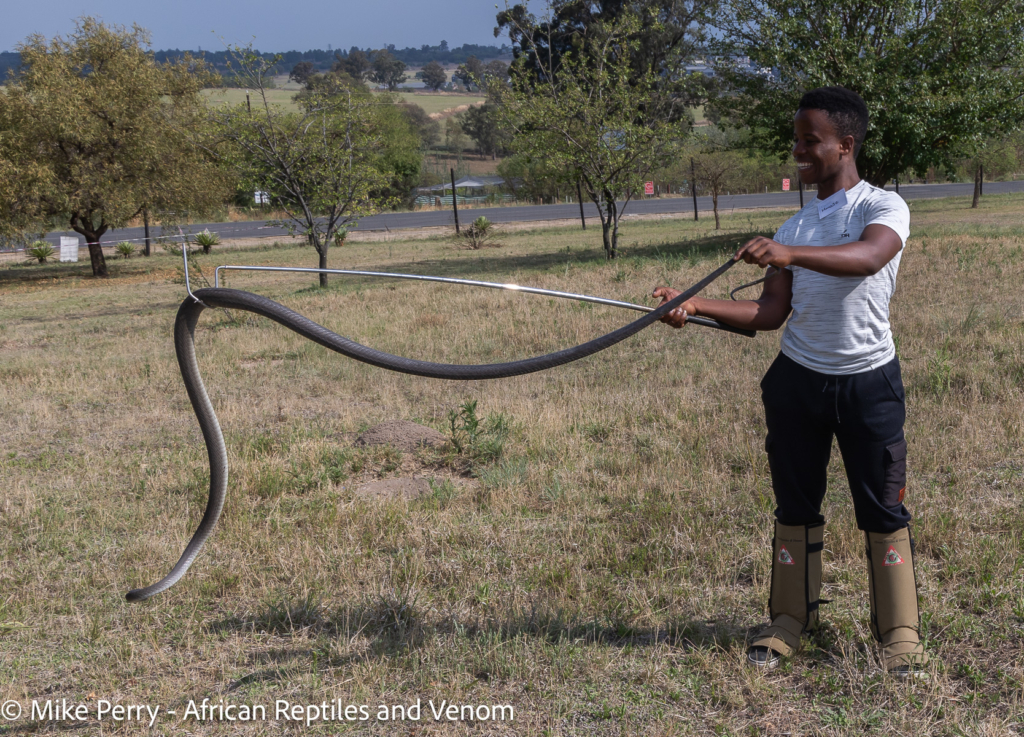BLACK TREE COBRA
Pseudohaje nigra
DESCRIPTION:
Very similar in appearance to the Gold’s Tree Cobra although this snake has larger scales. The Black Tree Cobra has 13 dorsal scale rows whereas Gold’s Tree Cobra has 15 dorsal scale rows. The Black Tree Cobra also has as well as a lower ventral and subcaudal count when compared to the Gold’s Tree Cobra. Shiny black above and paler brown or yellow-brown below. It is smaller than Gold’s Tree Cobra reaching a known size of 2.1 m.
HABITS & HABITAT:
Found in lowland forest, mangrove forest and swamp forest. These snakes are alert, nervous and quick but rarely seen. They move and climb very fast. If cornered or threatened it will rear-up spreading a long narrow hood.
DISTRIBUTION:
Sierra Leone, Liberia, Ivory Coast, Togo, Ghana, Guinea (Conakry), Nigeria.
DANGER, VENOM, FIRST AID:
In the laboratory, the venom of it’s sister species, Gold’s Tree Cobra, has high lethal potency, but no cases of bites or envenoming are recorded. The venom is presumed to be neurotoxic like other members of the cobra family and must be considered a medical emergency. Bites are extremely unlikely due to the rarity of this snake, and being nervous and alert, the snake is likely to flee before it is even seen.
Information sources: Published literature, Wikipedia and The Reptile Database
Gallery for Black Tree Cobra
CREDITS: Unless otherwise noted, all photographs and maps are sourced from iNaturalist and permitted under licensed under CC BY-NC 4.0.
https://creativecommons.org/licenses/by-nc/4.0/
Range Map for Black Tree Cobra

Map legend: Red dots show verified records submitted to inaturalist.org. Transparent overlay shows known range.





